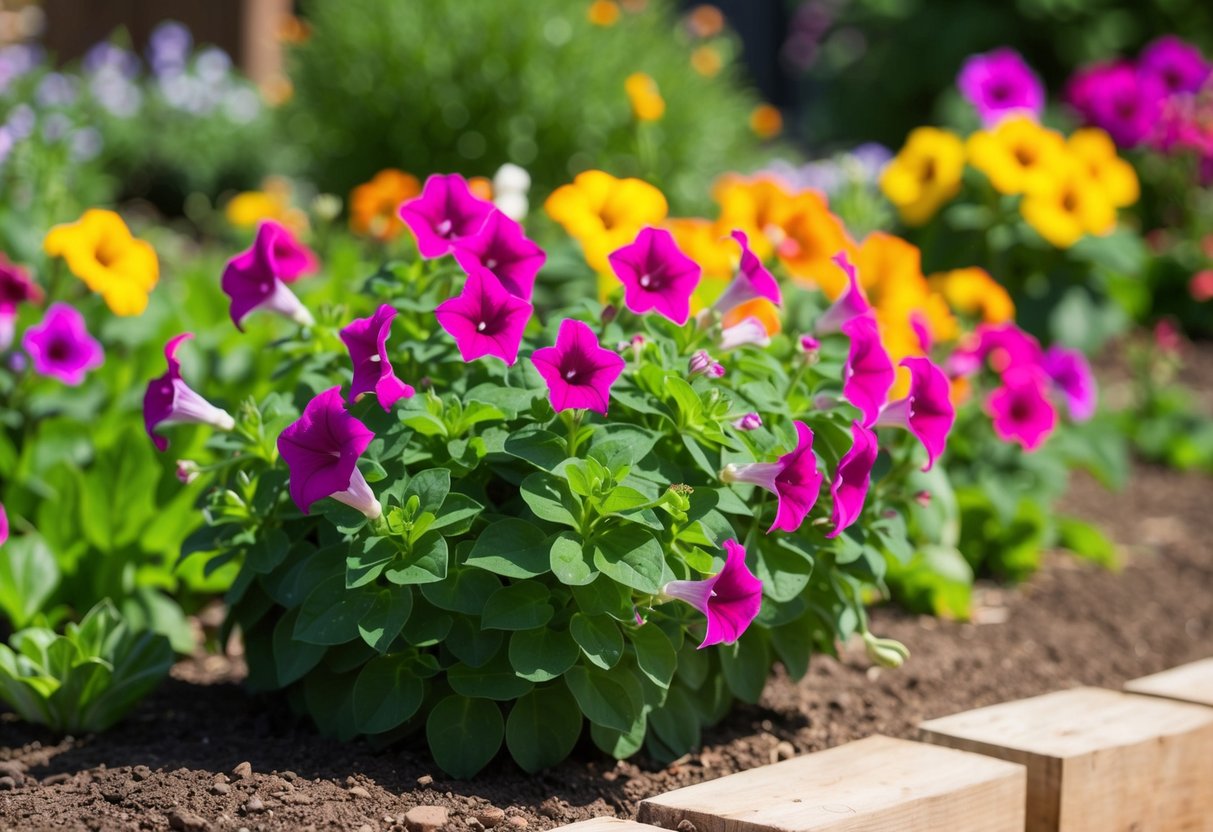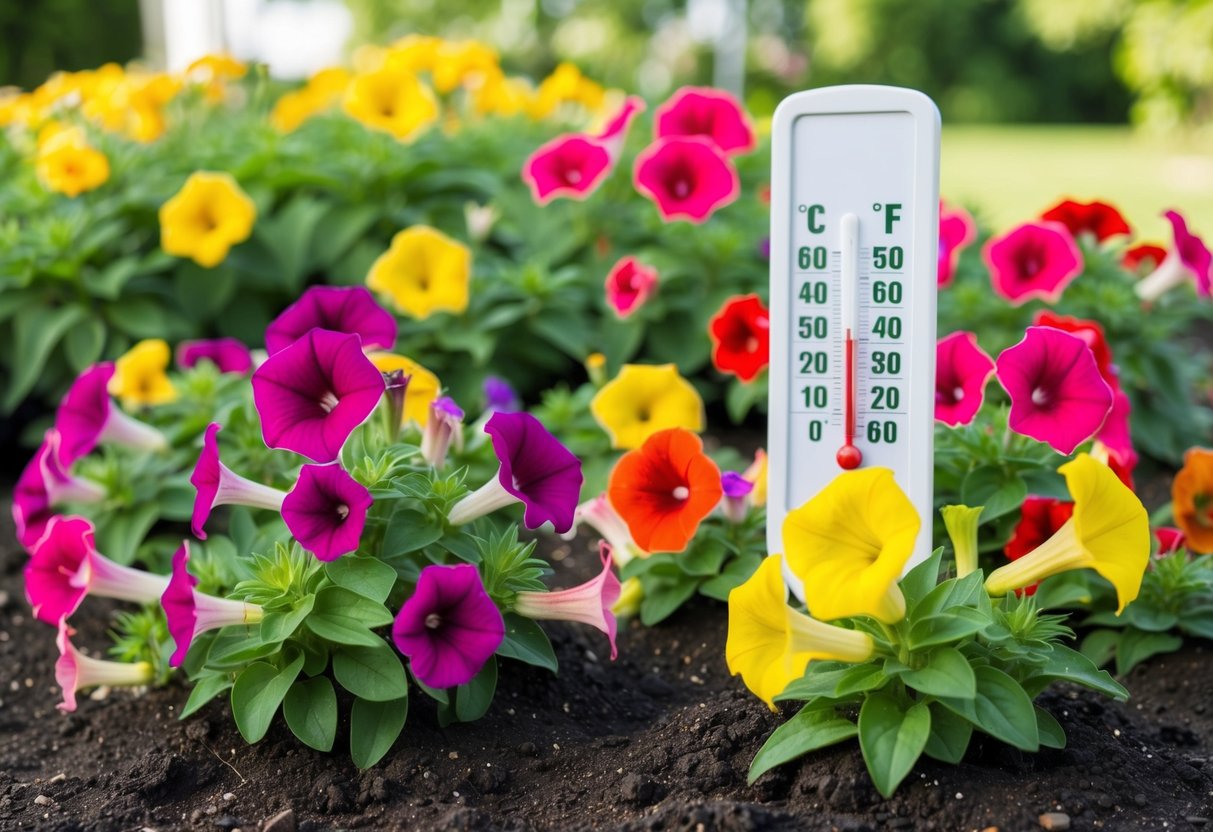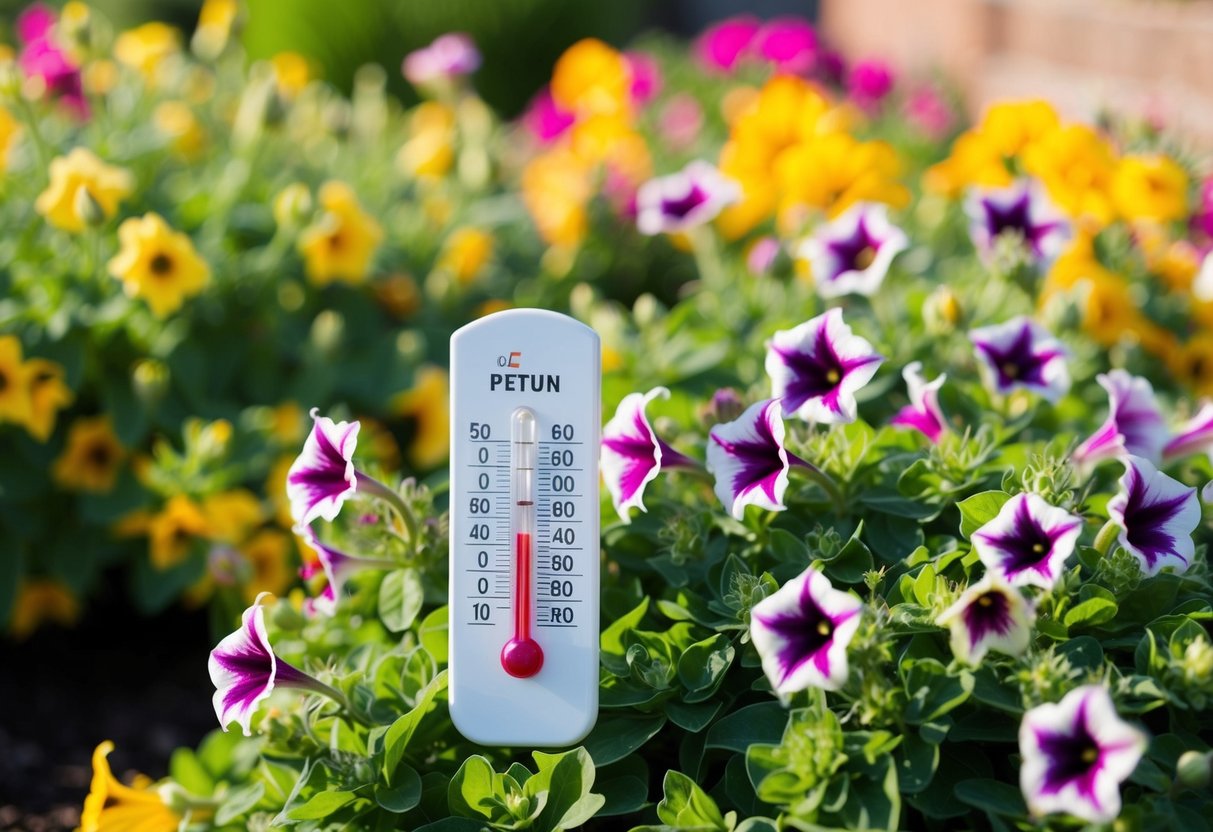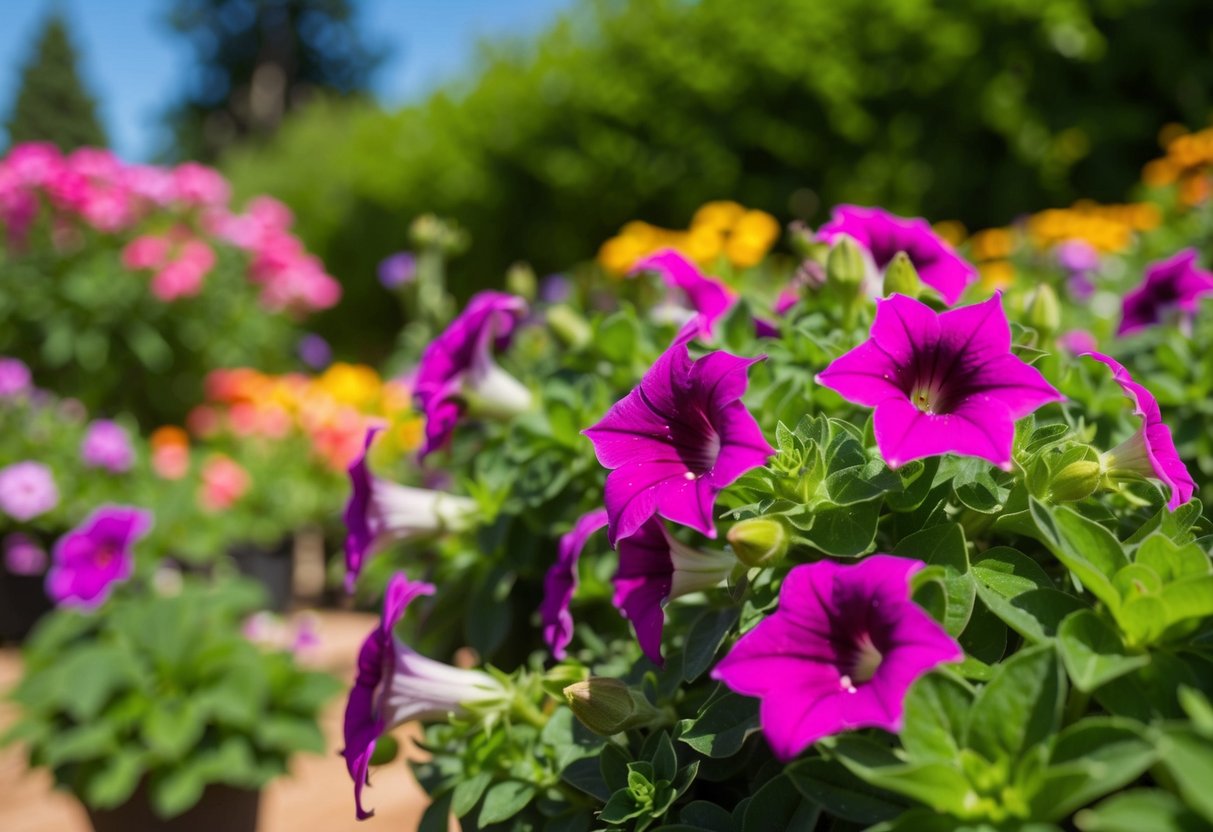What is the Best Temperature for Petunias: Tips for Thriving Blooms
Want your petunias to thrive? Temperature is key. Petunias flourish best when daytime temperatures are between 65°F and 80°F. At this “sweet spot,” your colorful blooms will showcase their beauty with ease. If temperatures rise above 80°F, try to provide some afternoon shade to help them stay vibrant and happy.

Petunias are versatile annuals and come in a range of varieties, each with its unique charm. From stunning wave petunias to classic grandiflora types, picking the right variety is just as important as the care you provide.
For optimal blooming, ensure your petunias get plenty of sunlight and well-draining soil, especially in warmer regions. This helps them cope with the heat, giving you a more abundant and long-lasting display.
Whether you’re planting in a garden bed or a container, keeping an eye on the temperature can make all the difference. Petunia care doesn’t have to be complicated! With just a bit of attention to their environment, you can enjoy a dazzling show of colors all summer long.
Optimal Temperature Conditions for Petunias

Petunias thrive under specific temperature conditions to produce vibrant blooms. They require careful attention during extreme weather, as they can be sensitive to cold and intense heat.
Understanding the Temperature Needs
Petunias typically do best when daytime temperatures range from 60°F to 75°F, while nighttime temperatures can drop to 55°F to 65°F. These ranges help the plants grow well and provide brilliant flowers.
During full sun, it’s important to make sure they have enough water, as sunlight helps them produce energy for growth.
Petunias are often grown as annuals but can also behave as tender perennials in warmer areas. In regions with mild winters, they can survive longer by avoiding frost exposure. You should plant them outside after the last frost in spring to prevent cold damage.
Dealing With Extreme Temperatures
When faced with extreme temperatures, it’s crucial to take protective measures for your petunias. If temperatures drop to about 40°F or lower, it can harm their growth, so covering them at night may help.
Consider bringing potted plants inside when frost is expected in the fall.
Conversely, during intense heat waves, petunias will need regular watering. High temperatures can lead to rapid soil drying, affecting plant health.
It’s best to maintain a moderate humidity level of 40-60% to ensure the plants aren’t stressed by dry, hot air. Monitoring your local climate helps in making timely adjustments throughout the growing season.
Petunia Varieties and Their Specific Needs

When growing petunias, it’s important to know which variety suits your environment. Different types have unique characteristics and needs, affecting how they grow and bloom in your garden.
Distinguishing Between Petunia Types
Petunias come in various forms, each with unique attributes. Grandiflora petunias boast large, stunning blooms, but may not fare well in wet conditions. Multiflora petunias offer smaller flowers, but handle bad weather better.
Milliflora varieties feature tiny blooms and are perfect for containers. Floribunda petunias blend the traits of grandiflora and multiflora, offering medium-sized flowers. Supertunias and Wave petunias are known for their vigorous growth and cascading habit, making them ideal for hanging baskets.
Learning these differences helps you choose the best type for your space and care conditions.
Selection Tips for Your Climate
Considering your climate when picking petunias is essential. They thrive in hardiness zones where daytime temperatures range from 60°F to 75°F, with cooler nights between 55°F and 65°F. Wave petunias, for example, are resilient in different conditions and suit various climates.
Humidity also plays a role; petunias prefer low to moderate humidity levels. Ensure that they are planted in well-drained soil to prevent waterlogging. In regions with higher temperatures or intense sun, consider multiflora petunias, as they can handle challenging conditions better.
By aligning the petunia variety with your climate, you’ll achieve healthier and more vibrant blooming plants.
Planting and Soil Preferences

When planting petunias, you need to pay attention to soil quality and the right planting time. This helps ensure strong growth and a beautiful display of blooms.
Preparing the Perfect Soil
Start by selecting a well-draining soil to plant your petunias. They thrive in soils that allow excess water to flow away easily, preventing root rot.
Improve the soil quality by adding organic matter like compost. This enriches the soil with nutrients and enhances its structure.
Check the soil pH before planting. Petunias prefer a pH between 5.5 and 6.5, which is slightly acidic to neutral. Use a simple soil pH tester to ensure the right balance. If necessary, adjust the pH by adding appropriate soil amendments.
For those planting in containers, remember to choose pots with drainage holes. Use a potting mix designed for containers, which often includes materials like perlite or vermiculite to ensure good drainage.
Timing and Techniques for Planting
Planting petunias at the right time is crucial. Begin by starting seeds indoors about 10-12 weeks before the last expected frost in your area. This gives the seeds ample time to germinate and grow into healthy seedlings.
When it’s time to transplant outdoors, wait until the weather is consistently warm. Transplant seedlings into the garden or containers after the danger of frost has passed. Space the plants about 12 inches apart to allow for spreading.
For planting techniques, dig holes big enough to fit the root ball of each petunia. Gently place the seedlings in the holes and cover them with soil, pressing slightly to remove air pockets. Water thoroughly to help settle the soil around the roots, ensuring a good start for your plants.
General Care and Maintenance for Healthy Petunias

To keep your petunias thriving, focus on proper watering and regular pruning. These practices help maintain vibrant blooms and healthy growth.
Watering Practices for Vibrant Blooms
Watering petunias is crucial. They need consistent moisture but dislike soggy soil.
It’s best to water deeply and let the top inch of soil dry out before watering again. This ensures the roots get enough moisture without drowning.
In hot weather, you might need to water more often, but always check the soil first. Using mulch can help retain moisture in the soil.
When growing petunias in containers, make sure they have drainage holes to prevent waterlogging.
Pruning and Deadheading
Pruning petunias is an important part of keeping them healthy. Regularly trim back overgrown stems to encourage bushier growth. This not only helps the plant look fuller but also aids in better air circulation.
Deadheading, or removing spent blooms, is another essential task. It prevents the plant from wasting energy on seed production and encourages more blooms. Simply pinch off the faded flowers just above the next set of leaves.
Occasional use of a liquid fertilizer can also promote blooming. Apply it every two to three weeks during the growing season for the best results.
Protecting Petunias from Common Problems

Petunias can face various challenges, from pests and diseases to environmental stresses. Knowing how to protect them helps keep your plants thriving.
Combatting Pests and Diseases
Petunias are often attacked by pests like aphids, slugs, and snails. To protect your plants, regularly inspect them and remove these pests by hand if possible.
You can use insecticidal soap as a natural alternative to chemical pesticides.
Diseases such as root rot and powdery mildew can also affect petunias. Avoid watering the leaves to prevent mildew. Make sure your potting soil has good drainage to help prevent root rot. If blight appears, remove affected parts promptly.
Keeping a close eye on your plants and acting quickly can often stop problems before they become severe.
Avoiding Environmental Stressors
Petunias need specific conditions to flourish. They require full sun for at least 8 hours a day to bloom well. If they are planted in areas with less sunlight, they may suffer from stunted growth.
Humidity and temperature fluctuations can also stress petunias. Maintain moderate humidity levels and ensure that temperatures don’t drop below 50°F (10°C). Too much moisture can lead to diseases, so make sure to keep the soil just moist enough without overwatering.
If your local climate offers partial shade, ensure your petunias have some protection from intense midday sun, which can lead to wilting. Balancing sunlight, water, and temperature will help your petunias stay strong.







